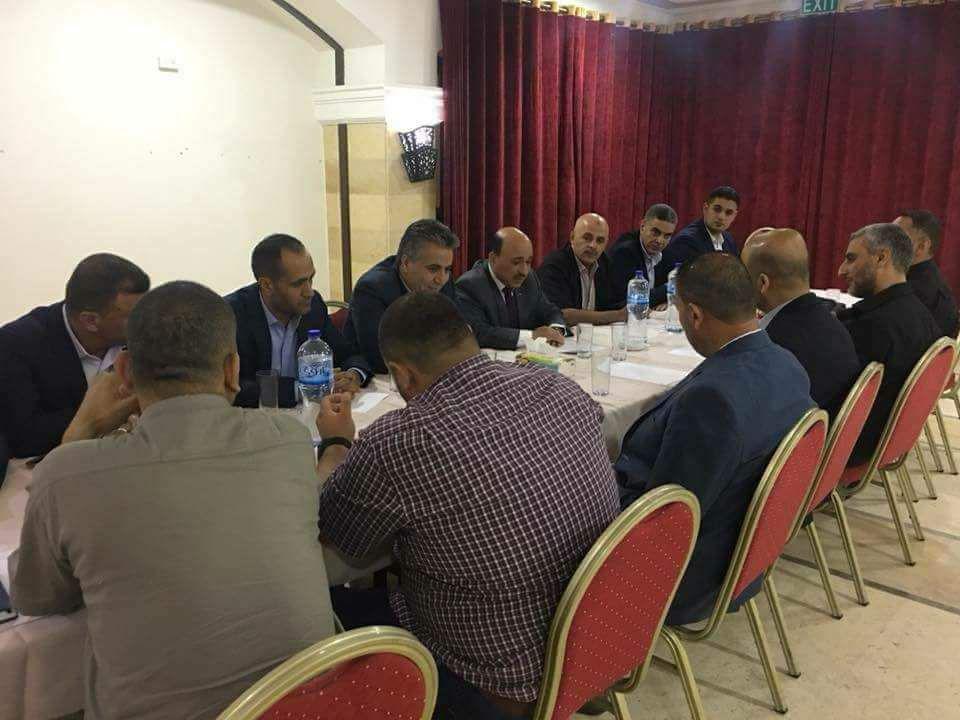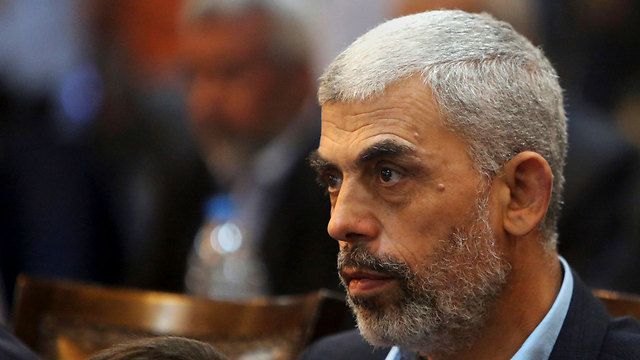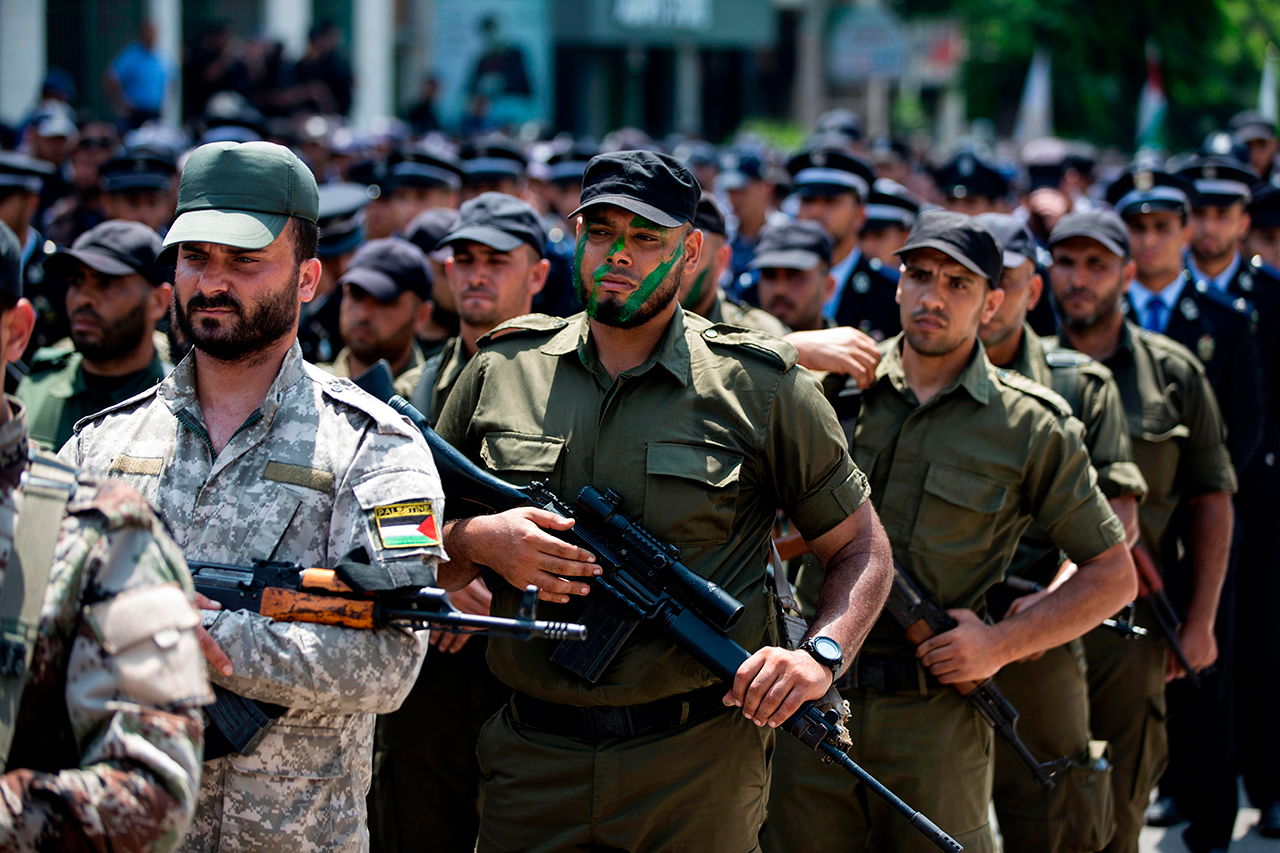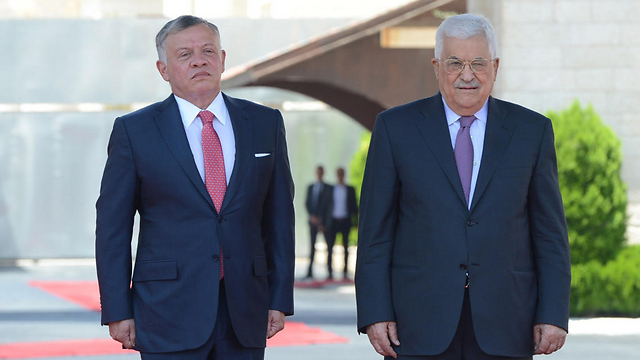

Fatah and Hamas: Another failed attempt at reconciliation?
Analysis: Monday’s events in Gaza will likely produce images of hugs, kisses and unity statements, but in the Fatah-Hamas history it is well known that festive declarations do not equal reality. Will the tough situation in the strip finally prompt Hamas to give up military control, or will Abbas waive his demand to disarm the military wing?
The common belief in Ramallah is that Hamas is interested in shaking off the dull civil control burden in Gaza, but keeping the more glamorous military control.
In May 2011, Fatah and Hamas dropped a bombshell by announcing they had reached an Egyptian-brokered reconciliation agreement (the “Cairo agreement”), under which an independent government would be established and elections would be held with the participation of both sides. The headlines screamed reconciliation, but what happened in practice? Nothing.
A year later, Palestinian President Mahmoud Abbas and Hamas leader Khaled Mashal met in Qatar and announced they had reached an agreement to establish a government and hold elections (the “Doha agreement”). The agreement led to a lot of statements and zero action.
Another year went by, and Fatah and Hamas declared once again, following a series of meetings in Egypt, that they had decided to implement the first Cairo agreement from 2011 (the “second Cairo agreement”). As expected, this joint declaration didn’t lead to any progress either.
In 2014, the parties launched negotiations again, this time in the Gaza Strip, and signed a new agreement (the “Shati agreement”) to establish an independent unity government and hold elections. Surprisingly, the parties established a technocrat government led by Rami Hamdallah, after which the Hamas government was dissolved. Soon enough, however, Hamas complained that the government’s activity was focused on the West Bank and that it was completely neglecting the strip.
Presidential and parliamentary elections were never held. Three years later, the strip’s neglect had prompted Hamas to create a sort of shadow government in Gaza, euphemistically known as “the administrative committee.” In response, Abbas imposed tough sanctions on Gaza, which led to a humanitarian crisis. Then the parties got together in Cairo again and announced a new agreement, under which Hamas would dissolve its shadow government and the Palestinian government would resume its activities in the strip (the “third Cairo agreement”).
This partial historical review does not include the “Mecca agreement,” the “Sanaa agreement,” the “Damascus agreement,” etc.
In light of past experience, it isn’t surprising that many players in the region, including the Palestinian public, are suspicious and dismissive of the new agreement. The Hamas leaders are the only ones going out of their way in public to prove how serious they are.
The organization’s political chief, Ismail Haniyeh, issued a public message Saturday stating this is what Hamas wants and has decided to do. “We know the road to ending the rift will be long and filled with setbacks and decisions requiring courage, but we are certain we have begun the movement to destroy the dividing fence,” he said.
Hamas leader in Gaza Yahya Sanwar, a gentle soul, announced several days ago he would “break the neck of anyone who tries to sabotage the reconciliation.”
Fatah, however, isn’t rushing to embrace Hamas’ announcements. The decision to dismantle the shadow government received a chilly response from Abbas. Two weeks after the dissolution of the Gaza committee, he has yet to lift the sanctions imposed on the strip. “After following Hamas’ conduct in the past decade, I believe they won’t honor the agreement,” says a source in Ramallah’s political leadership. “Their promises cannot be trusted.”
Senior PA officials head to Gaza
The ceremonial and festive part of the agreement begins Monday, when Palestinian Prime Minister Rami Hamdallah enters the strip through the Erez Crossing with all his ministers. It will be his first visit to Gaza since 2014. Hamdallah will be accompanied by the Palestinian intelligence chief and Abbas’s confidant, Majed Faraj, Palestinian police chief Hazem Attallah, and likely also the head of preventive security, Ziad Hab al-Rih.
A delegation comprised of senior officers from the Palestinian security services entered Gaza several days ago and held a preliminary meeting with Hamas members on Friday. Senior officials from the Egyptian General Intelligence Directorate were expected to arrive in the strip Monday to oversee the talks between the parties. These officials are very familiar with the situation on the ground. One of them served in the past in the Egyptian Embassy in Tel Aviv and in the Egyptian representative’s office in Ramallah. They will hold their meetings in the PA’s desolate presidential residence in Gaza.
Barring any last-minute changes, Egyptian intelligence chief Khaled Fawzy is expected to arrive in Ramallah on Tuesday. He will meet with Abbas and then travel straight to the Gaza Strip through the Erez Crossing. At the same time, the Palestinian government will convene in the strip for a festive meeting before regaining control of the government ministries. The PA officials are expected to return to Ramallah on Wednesday.
Fawzy’s visit to Ramallah is the Egyptians’ way of letting Abbas know they see him as a key player in the move. The Palestinian president, by the way, is leaving for a one-day visit to Jordan on Monday, although it’s unclear whether the purpose of the short trip is to update King Abdullah on the talks with Hamas.
The Palestinian government and PA officials’ major and complex visit to Gaza is expected to be mostly ceremonial. At this stage, the parties likely won’t discuss the essence of the reconciliation and the serious obstacles they are facing. The rest of the discussions will likely be held in Cairo, far from the cameras.
Main problems faced by parties
The crossings - Abbas wants to gain control of the Rafah Crossing in the hopes of eventually bringing to an organized opening of the crossing. Hamas is very interested in opening the crossing, as it will significantly ease the 10-year blockade on the strip. It’s unclear, however, whether Hamas would agree to grant the PA’s security apparatus exclusive control of the crossing or whether it would seek to have representatives supervising it, like in the Erez Crossing, where a Hamas checkpoint is followed by a PA checkpoint.
The military wing - In all the appeased statements issued by Hamas leaders, there has not been a hint of willingness to give up the organization’s military wing and its arsenal. On the contrary, senior Hamas members Moussa Abu Marzouk and Mahmoud al-Zahar have clarified the weapons of the resistance are non-negotiable in the reconciliation talks. Fatah, on the other hand, is willing to give them a chance, but it’s hard to see Abbas giving up and allowing Hamas to apply the Hezbollah model in Lebanon—in which the civil control is in one entity’s hands and the military control is in another entity’s hands—to the Gaza Strip.
The Quartet hasn’t welcomed the reconciliation, but it has clarified it supports the PA’s return to the Gaza Strip. US President Donald Trump’s special envoy, Jason Greenblatt, said in a recent tour of the Gaza border that the PA should regain control of the crossings. Both the Quartet and the Americans avoided referring directly to Hamas.
Monday’s festivities in Gaza will likely produce images of hugs, kisses and statements about unity, brotherhood and the same blood flowing through the veins. But in the Fatah-Hamas history, it is well known that festive declarations do not equal reality. Will the tough situation in the strip finally prompt Hamas to give up control, keeping the theoretical option of taking over the entire PA in future elections? Will Abbas waive his demand to disarm the military wing? Will Monday’s warm handshakes turn out to be a repeat of the empty handshakes witnessed in Cairo, Doha and Shati? At this stage, it’s seems neither Abbas nor Haniyeh have the answers.



















